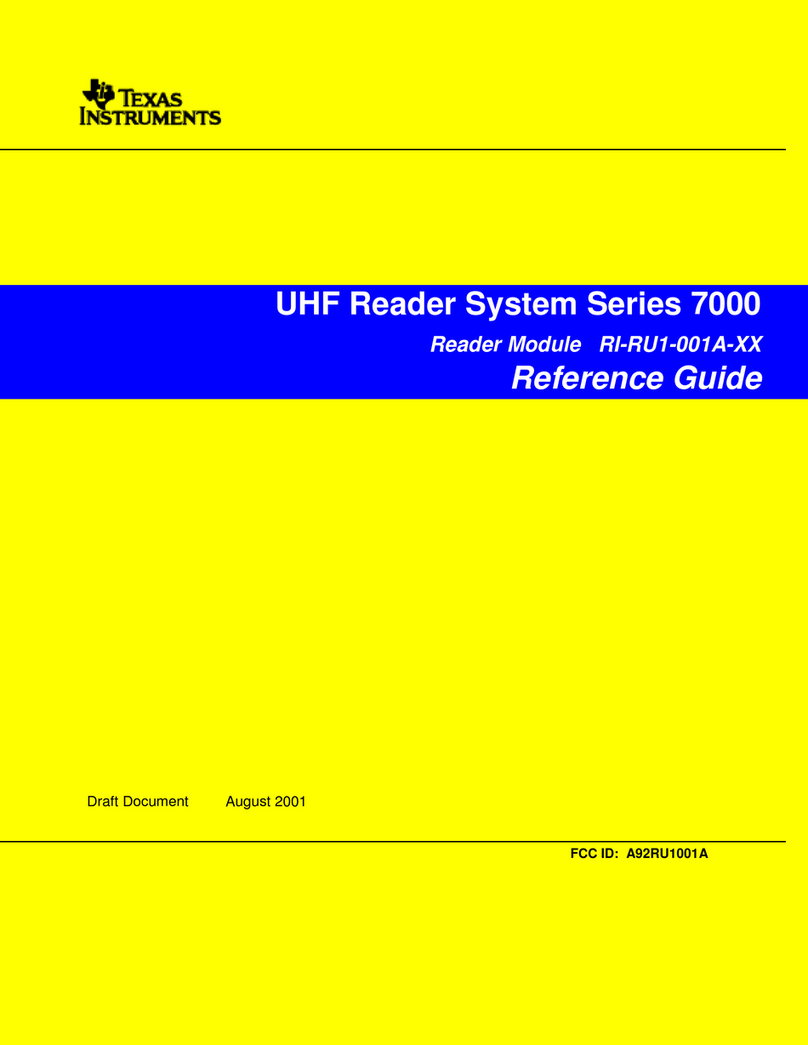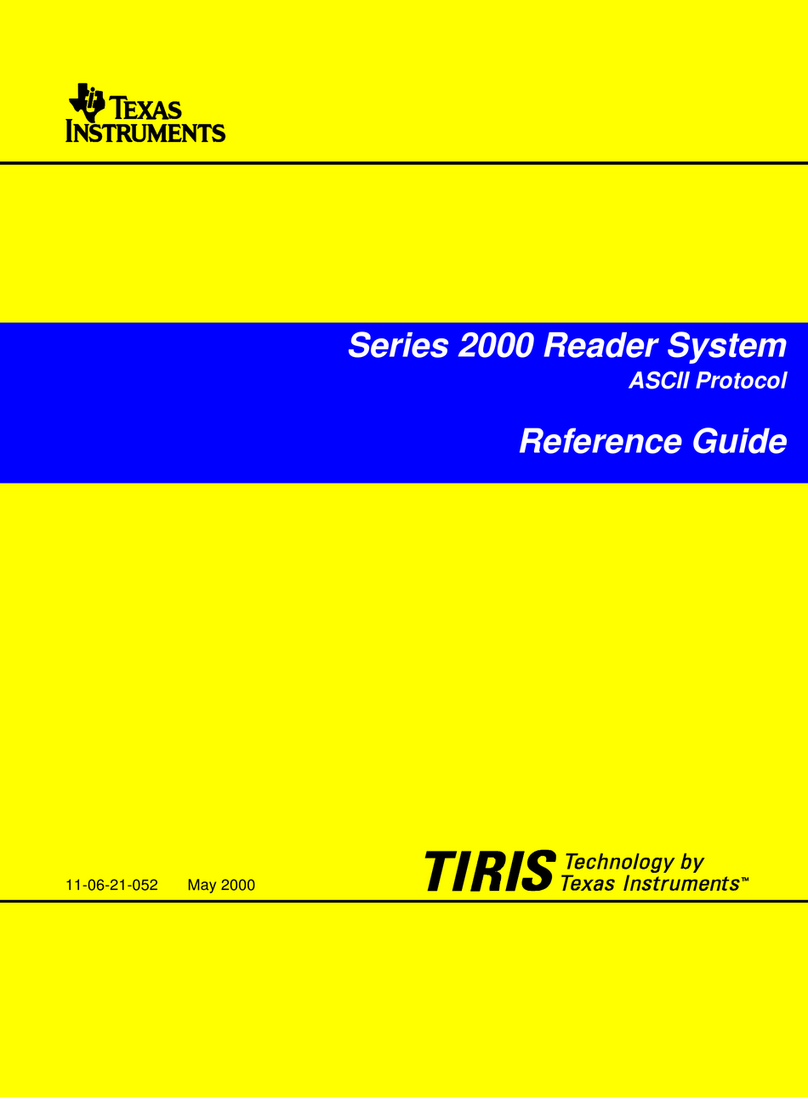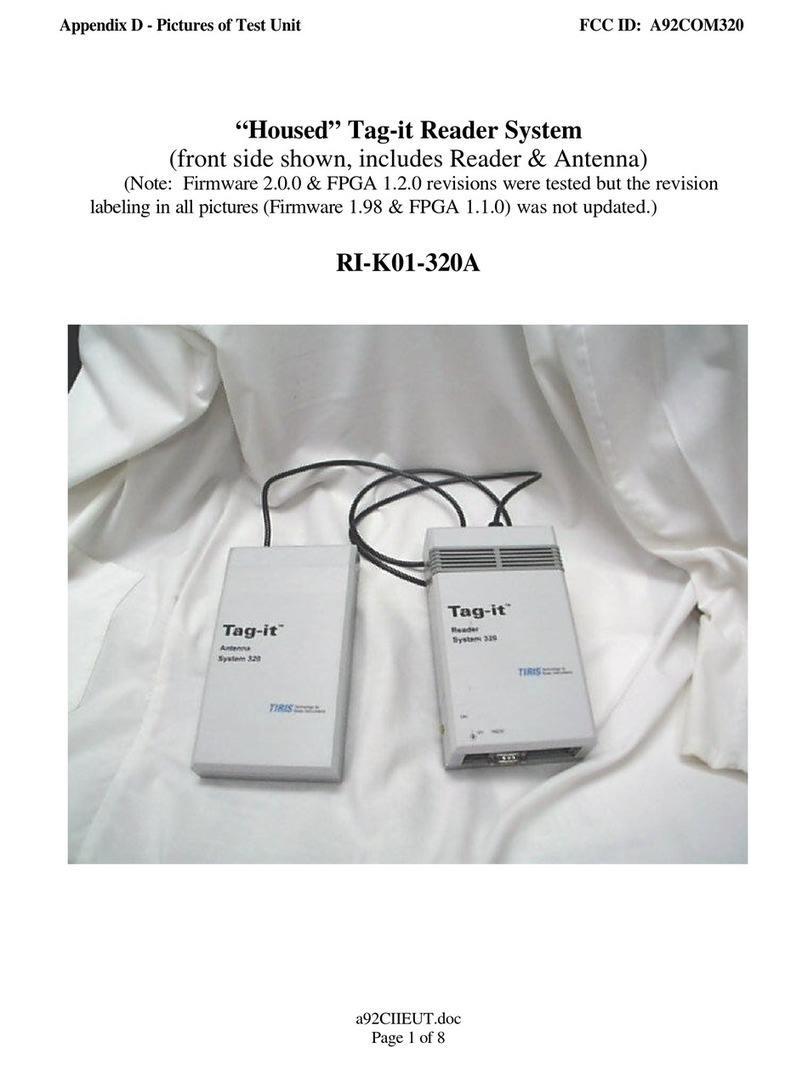
TRF7960
TRF7961
SLOU186F–AUGUST 2006–REVISED AUGUST 2010
www.ti.com
4.4 ELECTRICAL CHARACTERISTICS
over temperature range VS= 5 V (unless otherwise noted) TYP
–40°C
PARAMETER CONDITIONS MIN/
25°C TO UNIT MAX
110°C
IPD Supply current in power-down mode All systems disabled, including supply-voltage regulators 1 10 μA MAX
The reference voltage generator and the VDD_X remain
IPD2 Supply current in power-down mode 2 120 300 μA MAX
active to support external circuitry.
Oscillator running, supply-voltage regulators in
ISTBY Supply current in standby mode 1.5 4 mA MAX
low-consumption mode
Supply current without antenna driver Oscillator, regulators, Rx and AGC, are all active. Tx is
ION1 10 16 mA MAX
current off.
Supply current with antenna driver Oscillator, regulators, Rx, AGC, and Tx are all active.
ION2 70 mA MAX
current Pout = 100 mW.
Supply current with antenna driver Oscillator, regulators, Rx, AGC, and Tx are all active.
ION3 120 mA MAX
current Pout = 200 mW.
1.4 MIN
BG Band Gap voltage Internal analog reference voltage 1.6 V
1.7 MAX
1.4 MIN
VPOR Power on reset voltage (POR) 2 V
2.5 MAX
3.1 MIN
VDD_A Regulated supply for analog circuitry 3.5 V
3.8 MAX
4 MIN
VDD_RF Regulated supply for RF circuitry Regulator set for 5-V system with 250-mV difference. 4.6 V
5.2 MAX
3.1 MIN
VDD_X Regulated supply for external circuitry 3.4 V
3.8 MAX
The difference between the external supply and the
Rejection of external supply noise on
PPSRR regulated voltage is higher than 250 mV. Measured at 26 20 dB MIN
the supply VDD_RF regulator 212 kHz.
Half-power mode 8 12 ΩMAX
RRFOUT PA driver output resistance Full- power mode 4 6 ΩMAX
5 MIN
RRFIN RX_IN1 and RX_IN2 input resistance 10 kΩ
20 MAX
VRFIN Maximum input voltage At RX_IN1 and RX_IN2 inputs 3.5 VPP MAX
fSUB-CARRIER = 424 kHz 1.2 2.5 mVPP MAX
VSENS Input sensitivity fSUB-CARRIER = 848 kHz 1.2 3 mVPP MAX
tSET_PD Set up time after power down 10 20 ms MAX
tSET_STBY Set up time after standby mode 30 100 μs MAX
Recovery time after modulation
tREC Modulation signal: sine, 424-kHz, 10-mVpp 60 μs MAX
(ISO14443)
30 MIN
fSYS_CLK SYS_CLK frequency In PD2 mode EN = 0 and EN2 = 1 60 kHz
120 MAX
CLKMAX Maximum CLK frequency 2 MHz TYP
VIL Input logic low 0.2 0.2 VDD_I/O MAX
VIH Input logic high 0.8 VDD_I/O MIN
ROUT Output resistance I/O_0 to I/O_7 low_io = H for VDD_I/O <2.7 V 400 800 ΩMAX
RSYS_CLK Output resistance SYS_CLK low_io = H for VDD_I/O <2.7 V 200 400 ΩMAX
8ELECTRICAL SPECIFICATIONS Copyright ©2006–2010, Texas Instruments Incorporated
Submit Documentation Feedback
focus.ti.com: TRF7960 TRF7961






























